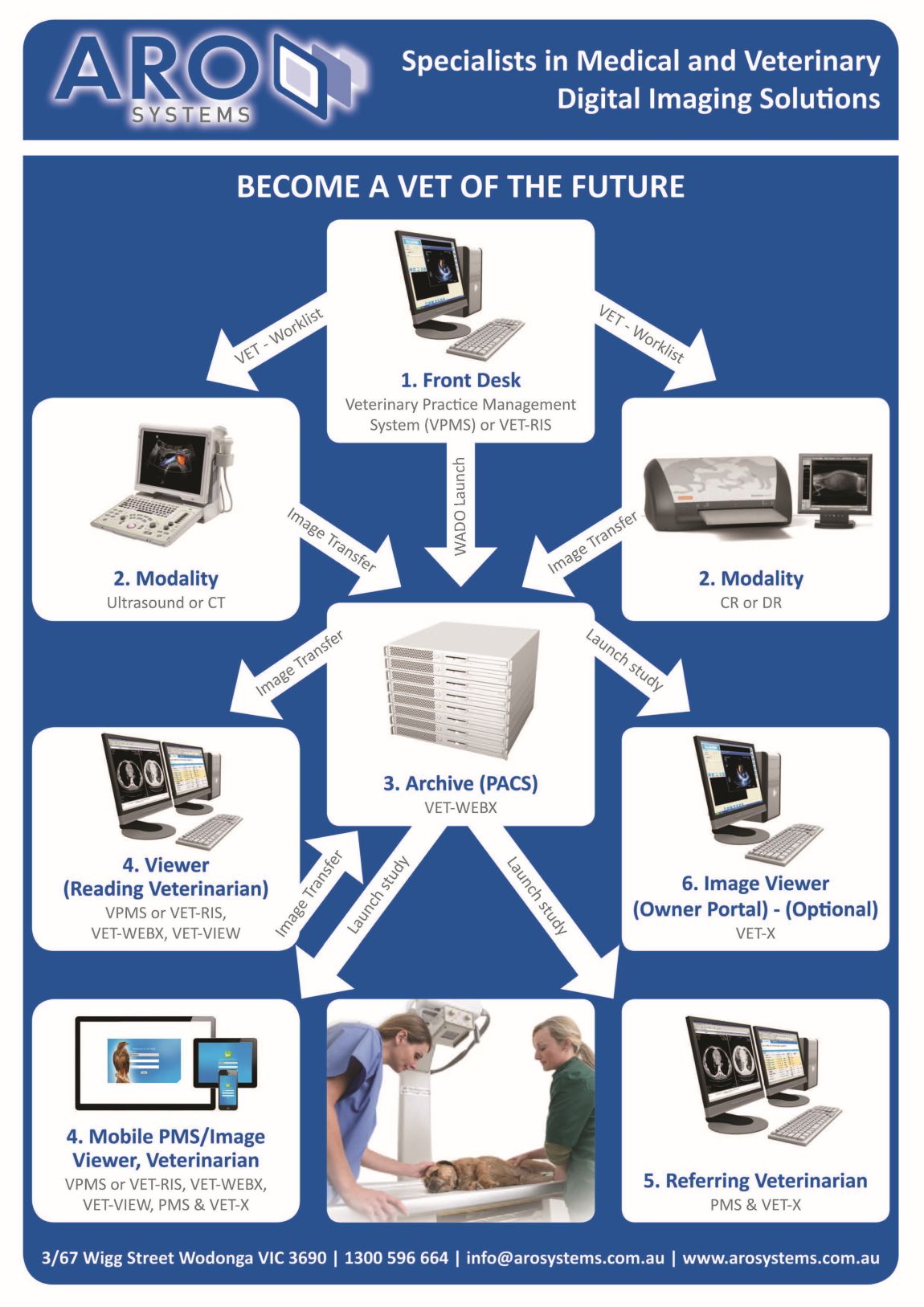Leveraging world class veterinary technology: what does integration really mean?
You know better than I do – a vet’s office is a busy and challenging environment. From the moment a patient and their owner walks in through your door, there are numerous key processes that need to take place: from capturing the patient’s details to examining them; from capturing diagnostic images to sharing these images with any referrers. You’re constantly required to do more, with less time.
At the same time, the veterinary space is becoming more and more competitive, with many smaller practices being consolidated into larger groups.
As a result, simply sticking to what you have always done is no longer an option.
When a number of our veterinary clients first came to us, they were troubled by their inability to keep up with the competition, both in terms of patient care efficiency and the level of customer service provided.
When we looked closer, we found that these practices were, to varying degrees, being impeded by their own processes. Specifically, they were still:
- Completing tasks manually; and
- Using lots of different systems that didn’t talk to each other.
These problems were impeding them in a number of ways:
- Human error in data entry resulting in erroneous patient information or duplicate entries for the same patient.
- Time wasted manually entering patient information that was already stored in the Practice Management System into the various digital imaging systems. It may only seem like a few minutes each time – but over a day, these little tasks all add up!
- Lost patient images, meaning that patients weren’t billed for the images, but the practice has to incur multiple costs when they are captured again.
- Inability to access diagnostic images outside the practice, making the vets under-equipped for emergency and mobile patient care.
- Inability to easily share images with referring vets or clients.
Once we recognised how significantly these problems were holding these practices back, we worked with them to help them effectively modernise their practice for the present (and future) demands of the veterinary industry.
We specifically helped these practices leverage modern technology to:
- Integrate their practice management software with their digital imaging modalities and image storage solution, so that these systems did talk to each other;
- Achieve one entry per patient throughout the practice, eliminating the need for multiple instances of data entry, reducing errors and duplicates in the systems, and reducing the time spent preparing for imaging studies;
- Easily track imaging studies to eliminate billing loss;
- Allow vets to access their patients’ diagnostic studies on mobile devices while they’re on the go; and
- Provide easy, but secure access to patient images for referrers and clients.
As a result, these practices were able to become more efficient and productive, and were even leveraging these strengths as a competitive advantage.
In order to achieve this, we implemented quite a clever combination of technologies, all of which were specifically designed for veterinary use.
These included:
- VET-WEBX Picture Archiving and Communication System (PACS), a complete, easy-to-use, and affordable solution for storing, viewing and distributing any veterinary imaging study or report;
- VET-VIEW, the easy-to-use reading station, especially designed for veterinarians; and
- VET-Worklist, a powerful DICOM worklist server which ensures consistent veterinary image data at all times.
If you are experiencing any of the issues I’ve described above, or are interested in understanding how integrated veterinary technology can benefit your practice, please give me a call on 1300 596 664 or send me an email on info@arosystems.com.au
You simply can’t afford to wait any longer to modernise your practice.
Learn about the benefits your practice can gain by leveraging true integration, download our integration overview now.


